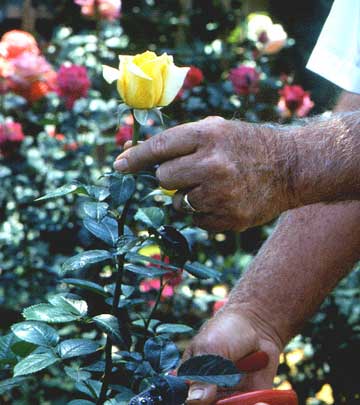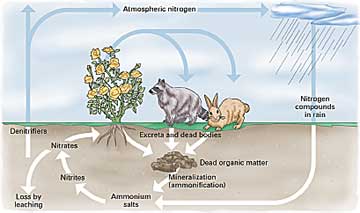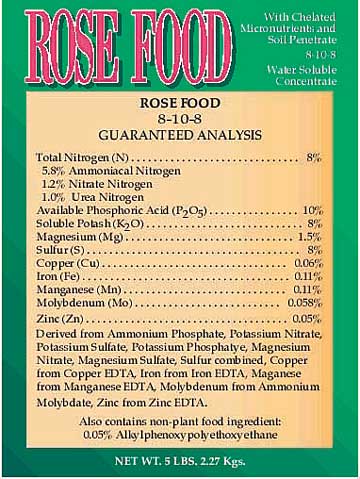





 What you feed your roses, and howoften, will affect its growth.
What you feed your roses, and howoften, will affect its growth.
Roses need three primary nutrients -- nitrogen (the "N" on a fertilizer label), phosphorus (P) and potassium (K) -- as well as a number of secondary and trace elements in order to thrive. Nitrogen promotes foliage growth; phosphorus encourages healthy root and flower development; and potassium maintains vigor. Calcium, magnesium, and sulphur (secondary elements) and trace elements (boron, chlorine, copper, and iron) also promote plant-cell and root growth.
Click here to learn how to cut and prune your roses.
continue reading belowPrimary nutrients are available from both organic (derived from plant or animal life) and synthetic or inorganic materials. Synthetic fertilizers come in dry, liquid, or foliar liquid form. Work dry fertilizers into the soil (moisten the soil first) and water after application to carry the nutrients to the roots. Liquid fertilizers are added to water with an in-hose applicator, and foliar liquids are sprayed on and absorbed by the leaves. Whatever you use, be sure to follow the directions and dosages exactly. Excessive doses can damage plants.
Most roses need regular feeding -- with fertilizers that are balanced for roses, your region, and your garden soil. Begin fertilizing newly planted roses once they are established -- about three to four weeks after planting. Start feeding older plants in spring when new growth is about 6 inches long. At a minimum, species roses, old roses, and climbers need an application in the early spring as the buds prepare to open. Repeat-blooming roses, old roses, and climbers will benefit from a second feeding of liquid fertilizer after the first bloom, and modern roses need regular feeding.
 The Nitrogen Cycle is essential forstrong plants.
The Nitrogen Cycle is essential forstrong plants.
Alfalfa pellets worked into the soil are an organic source of nitrogen and can be used as a slow-release supplement in spring. Use pellets that are not feed-grade so your rose food doesn't feed the rabbits. A time-release synthetic fertilizer applied in the spring and again in July will reduce the need for reapplications. In zone 6 and colder, stop fertilizer six weeks before the average date of the first frost and let plants harden off for their winter rest.
 Read labels to make sure you're getting the proper nutrients.
Read labels to make sure you're getting the proper nutrients.
A Guaranteed Analysis statement must appear on all mixed fertilizer labels. The label must indicate the proportion of each element present, as well as its sources (in this example, ammonium phosphate, potassium nitrate, etc.). The numbers 8-10-8 denote the percentages of nitrogen, phosphorus, and potassium present in this mix. This example contains 8 percent nitrogen, 10 percent phosphorus, and 8 percent potassium. Some fertilizers also contain secondary and micronutrients. Look for fertilizers with micronutrients derived from EDTA complexes as they are water soluble and hence immediately available to the root system. Rose foods containing all three levels of nutrients (primary, secondary, and micro-) are the best choice. In some cases, a soil penetrant will be added to the fertilizer to assist in delivery of the nutrients in clay soils.
Roses are heavy feeders. They require a constant supply of nutrients to sustain growth and bloom production. Here are two methods that will meet their demand for food:
1. The Organic Method: For a continuing cycle of decomposition, regularly space applications of fertilizers on the rose beds about every four weeks. It is best to work the fertilizer into the upper soil levels. This program can be supplemented with biweekly applications of fish emulsion.
2. The Chemical-Fertilizer Method: Start with a time-release synthetic in the spring and reapply midsummer, with monthly applications of a complete rose food (with all primary, secondary, and micro-nutrients) in between major feedings. Always follow label application and safety instructions when using a chemical rose food.
Get rose-pruning tips.
Copyright © www.100flowers.win Botanic Garden All Rights Reserved